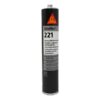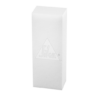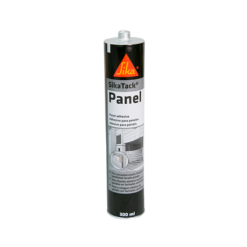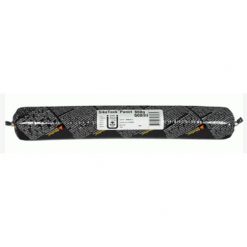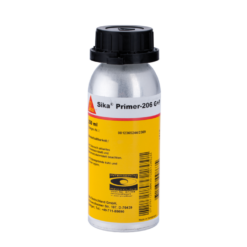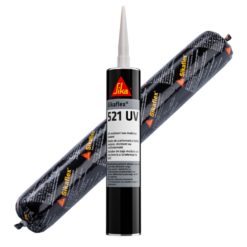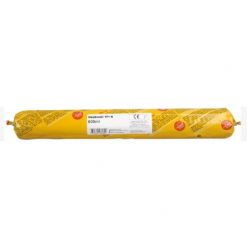Sikaflex PRO-3 uni white – 422910 – 20pcs/box
£213.40 +VAT
20pcs/box
- Movement capability ±35 %
- Good mechanical and chemical resistance
- Bubble-free curing
Sikaflex® PRO-3 is a 1-part, polyurethane, tough, coloured, elastic joint sealant for sealing many joint configurations in floors and civil engineering structures. It provides a waterproof seal with good mechanical properties, is resistant to chemicals and remains elastic over a wide range of temperatures.
Usage
Horizontal and vertical interior and exterior sealing joint applications:
- Food industry
- Cleanrooms
- Sewage treatment plants
- Tunnels
Sealing horizontal and vertical joints for:
- Floors
- Pedestrian and traffic areas
- Car park parking decks
- Warehouse and production floor areas
Advantages
- Movement capability ±35 %
- Good mechanical and chemical resistance
- Bubble-free curing
- Over-paintable
- Good adhesion to defined construction materials
- Very low emissions
| 600 ml cylindrical foil pack | 20 foil packs per box |
Refer to the current price list for packaging variations
ENVIRONMENTAL INFORMATION
- Conformity with LEED v4 EQc 2: Low-Emitting Materials
- VOC emission classification GEV-Emicode EC1PLUS, license number 3206/20.10.00
APPROVALS / STANDARDS
- CE Marking and Declaration of Performance to EN 15651-4 – Sealants for non-structural use in joints in buildings – Sealants for pedestrian walkways. Classification: PW EXT-INT CC 25 HM
- CE Marking and Declaration of Performance to EN 14188-2 – Joint fillers and sealants – Cold applied joint sealants
- Chemical Resistance. DIN EN 14187, SKZ, Test report No. 127980/17-IV
- Performance Test EN 15651-4, SKZ, Report, 94931/11-I-E
- Biological Resistance, ISO 846, Fraunhofer, Certificate, No SI 1103-544
- Cold applied sealants, EN 14188-2, SKZ, Report, No 94931/11-IV
- Determination of staining, ASTM C 1248-04, SKZ, Report, No 98947/11-V
- Determination of staining, ISO 16938-1, SKZ, Report, No 98947/11-II
- ISO 11600 F-class 25 HM, SKZ, Report, No 94931/11-II
- Standard specification for elastic joint sealants, ASTM C920-11 Class 35, ASTM, Report, No 0314920-SIKA
- Migration behaviour EN 1186, EN 13130, CEN/TS 14234, ISEGA, Certificate No. 48644 U 18
- Outgassing TVOC, CSM procedures, Fraunhofer, Certificate, No SI 1103-544
- Resistance against diesel and jet fuel, DIBt Guidelines, SKZ, Test report No. 94931/11-V
- Sealants in waste water systems, DIBt Guidelines, SKZ, Report, No 94931/11-III
Chemical Base
Polyurethane i-Cure® Technology
Shelf Life
15 months from date of production
Storage Conditions
The product must be stored in original, unopened and undamaged sealed packaging in dry conditions at temperatures between +5 °C and +25 °C. Always refer to packaging.
Density
| ~1,35 kg/l | (ISO 1183-1) |
Product Declaration
EN 15651-4: PW EXT-INT CC 25 HM
EN 14188-2 – Joint fillers and sealants – Cold applied joint sealants
Shore A Hardness
| ~37 (after 28 days) | (ISO 868) |
Secant Tensile Modulus
| ~0,60 N/mm2 at 100 % elongation (+23 °C) | (ISO 8339) |
| ~1,10 N/mm2 at 100 % elongation (−20 °C) |
Elastic Recovery
| ~90 % | (ISO 7389) |
Tear Propagation Resistance
| ~8,0 N/mm | (ISO 34) |
Movement Capability
| ± 25 % | (ISO 9047) |
| ± 35 % | (ASTM C 719) |
Chemical Resistance
For chemical resistance refer to the following report: Chemical Resistance. DIN EN 14187, Sikaflex® PRO-3 (SL), SKZ, Report, 127980/17-IV
For resistance against water and salt water refer to the following report: Performance Test EN 15651-4, Sikaflex® PRO-3, SKZ, Report, 94931/11-I-E
Service Temperature
−40 °C to +70 °C
Joint Design
The joint width must be designed to suit the movement capability of the sealant. The joint width must be ≥ 10 mm and ≤ 40 mm. A width to depth ratio of 1:0,8 must be maintained (for exceptions, see table below).
Typical joint widths for joints between concrete elements for interior applications
| Joint distance [m] | Minimum joint width [mm] | Minimum joint depth [mm] |
| 2 | 10 | 10 |
| 4 | 10 | 10 |
| 6 | 10 | 10 |
| 8 | 15 | 12 |
| 10 | 18 | 15 |
Typical joint widths for joints between concrete elements for exterior applications
| Joint distance [m] | Minimum joint width [mm] | Minimum joint depth [mm] |
| 2 | 10 | 10 |
| 4 | 15 | 12 |
| 6 | 20 | 17 |
| 8 | 28 | 22 |
| 10 | 35 | 28 |
All joints must be correctly designed and dimensioned by the relevant standards and codes of practice before their construction. The basis for calculating the necessary joint widths are the type of structure, dimensions, technical values of the adjacent building materials, joint sealing material and the specific exposure of the building and the joints.
For larger joints, contact Sika ® Technical Services for additional information.
Related products
Sika Products
Sika Products
Sika Products
Sika Products
Sika Products
Sika Products
Sika Products


